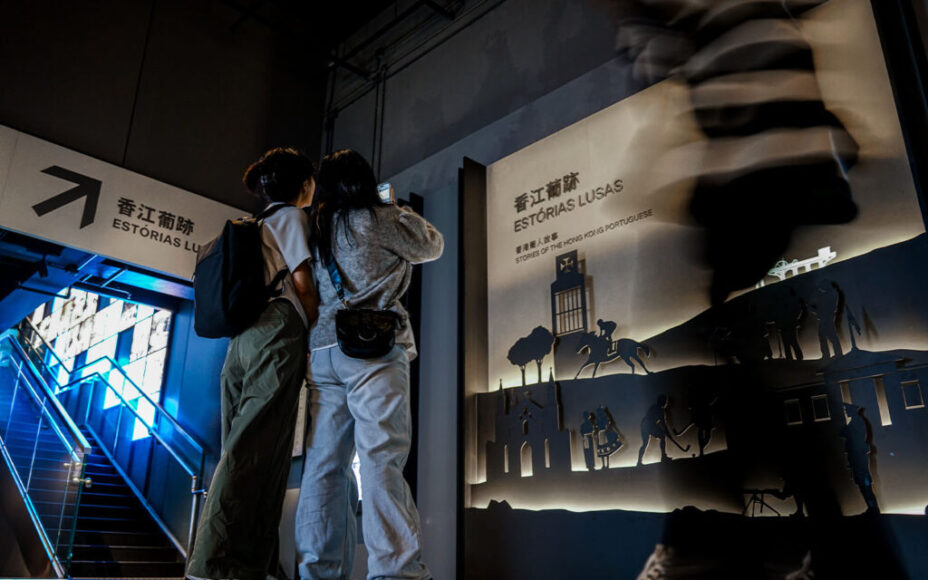Hong Kong is a city of layers. Its skyline, a jungle of gleaming towers, has chronicled the city’s ascent as a global financial centre, while the bustling streets below brim with Chinese and British heritage. Nestled within these well-established narratives is an often-overlooked story – the enduring influence of the Portuguese (and Macanese) in Hong Kong over the past 150 years.
A new permanent exhibition at the Hong Kong Museum of History, Estórias Lusas – Stories of the Hong Kong Portuguese, shines a light on this small but adaptable community’s legacy. It presents artefacts, personal testimonies and historical documents that show how the Portuguese helped shape Hong Kong. The exhibition opened in late November, as part of the museum’s Multifaceted Hong Kong Exhibition Series.
Spread across 10 rooms, Estórias Lusas is structured to guide visitors along the journey of the Portuguese community. It begins with the arrival of the first Portuguese in the mid-19th century.
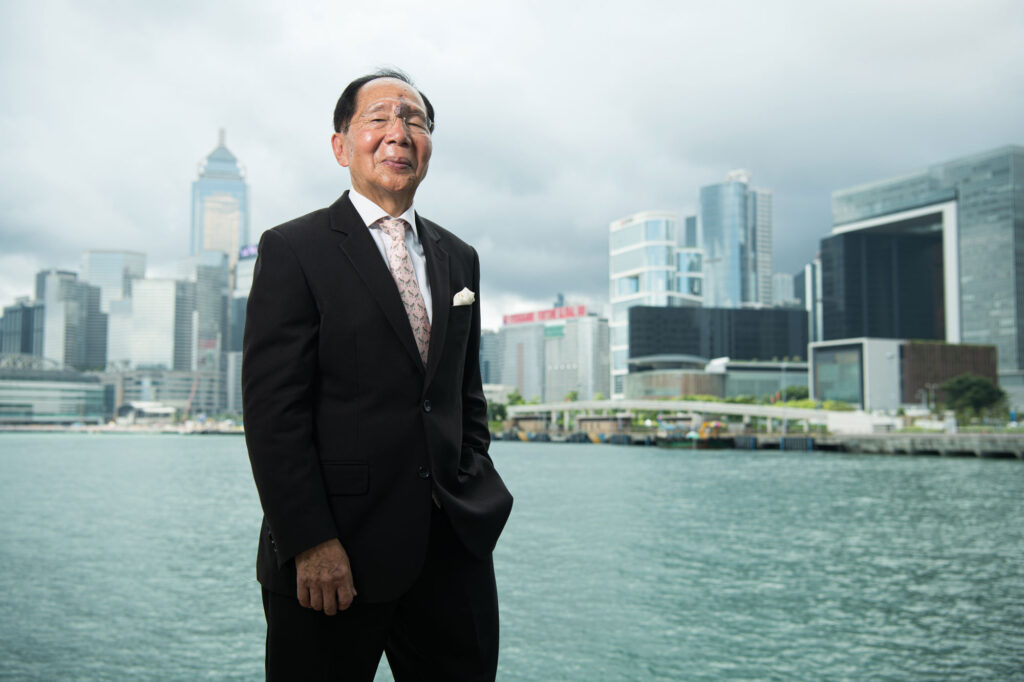
According to Francisco Da Roza, the former president of Club Lusitano (the oldest Portuguese social club remaining in the city) and a strong protagonist for Estórias Lusas, it was an exciting time in the Pearl River Delta region. “The potential of the city attracted different peoples who came to work, to settle and to make contributions,” he told Macao magazine in a past interview. “This is the foundation that made Hong Kong the international city it is today.” The banker’s family is Macanese, with mixed Portuguese and Chinese heritage.
The Portuguese newcomers shifted right into the heart of Hong Kong. The exhibition displays an 1872 map of the Graham Street neighborhood that delineates residences by ethnicity, marking 18 Portuguese households among roughly 100 – though that number would soon swell due to a wave of migration from Macao. Da Roza’s great-great-grandfather, Simão Vicente, made the move a few decades earlier: he was already working in a printing firm on Hong Kong’s Pottinger Street by 1846. Da Roza himself was born in Macao, but has been based in Hong Kong for decades.
While comparatively few Portuguese or Macanese live in Hong Kong these days, street names still bear the names of old Iberian-linked families. Two in Kowloon – Soares Avenue and Braga Circuit – pay homage to Francisco ‘Frank’ Paulo Vasconcelos Soares and José Pedro Braga, for instance. Both men were instrumental in developing what’s become the most densely populated area of Hong Kong.
From intermediaries to entrepreneurs
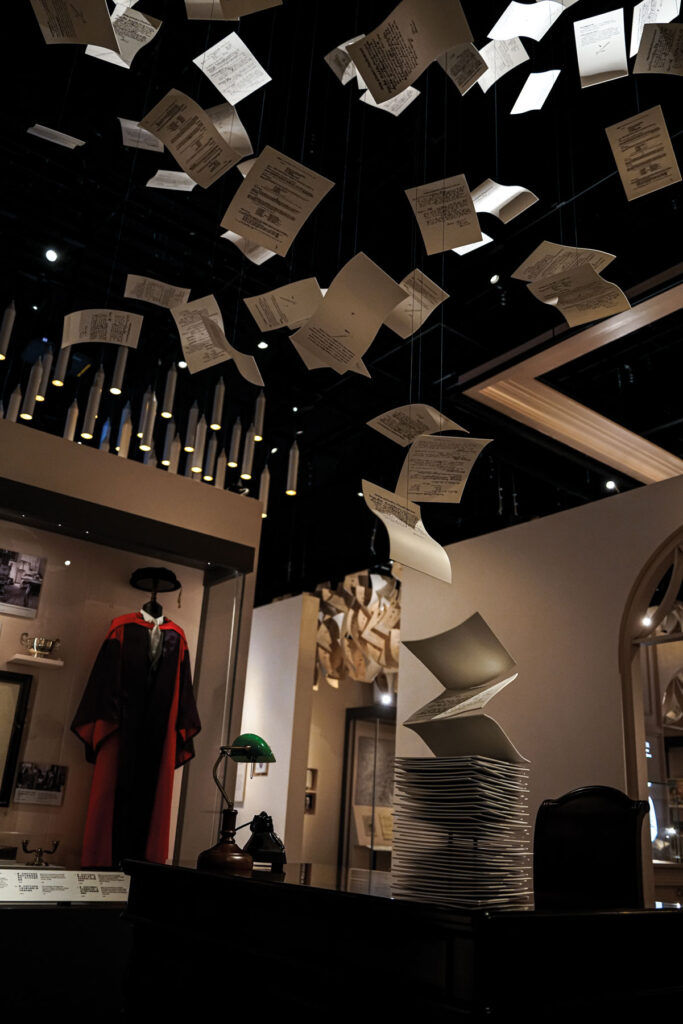
Many of the early Portuguese came to Hong Kong as intermediaries, using their skills and experience to bridge cultural and commercial gaps between the region’s Chinese and British populations. The Portuguese were known for their ability to deftly navigate cultural differences and linguistic barriers.
They worked as translators and civil servants within government departments. Or as compradores, managing trade relations between British firms and Chinese suppliers. Others were entrepreneurs, with families like the Noronhas and Xaviers establishing thriving businesses in printing (Noronha and Co.’s lithographic stones for printing bills can be seen in the exhibition). The aforementioned Braga belonged to the Macanese Noronha family, and was born in Hong Kong in 1871. He started out working for his grandfather’s printing business, then embarked on a successful career in journalism before founding his own printing company. In his later years, he served as chairman of both the Hongkong Engineering and Construction Company and the China Light and Power Company. A highly respected leader within Hong Kong’s Portuguese community, Braga was appointed as a Comendador da Ordem de Cristo by Portugual’s government in 1929, for services to the country. Six years later, he was made an Officer of the Order of the British Empire (OBE). These lofty titles were testament to Brago’s cross-cultural nous and strong sense of civic duty. After the Japanese occupied Hong Kong in 1941, he relocated to Macao where he worked on his book, The Portuguese in Hongkong and China. Braga died in Macao in 1944 and is buried in São Miguel Cemetery.
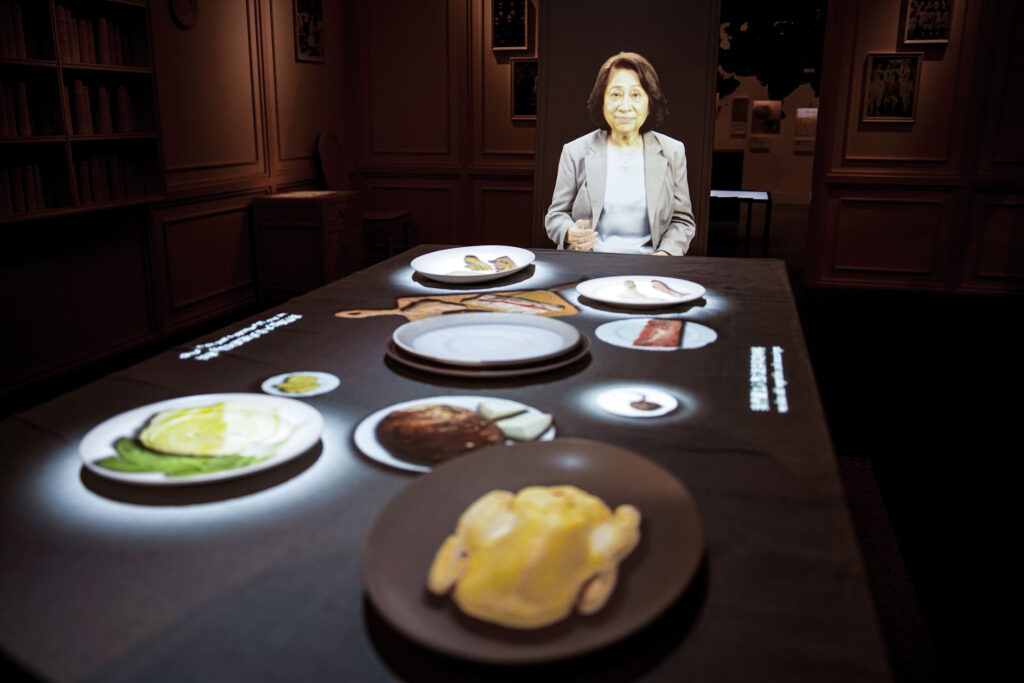
Another 20th century entrepreneur of Macanese (and Spanish) descent highlighted in Estórias Lusas is Frank Gardner, founder of the Plastic Manufacturing Corporation (PMC) – one of Hong Kong’s pioneering toy exporters. Toy manufacturing became a major industry in the city, and much of its output – particularly from the 1950s and 1960s – is considered collectable these days.
Gardner’s daughter, Angela Gardner, helped the museum illustrate her father’s success by contributing a number of vintage PMC products to Estórias Lusas, showcasing their evolution over the decades. Many visitors will feel nostalgic seeing his battery-operated rickshaw man with a red-painted rickshaw in tow. The toy’s original cardboard box reads, “Hong Kong Rickshaw: With Realistic Movements Just Like a Real One”.
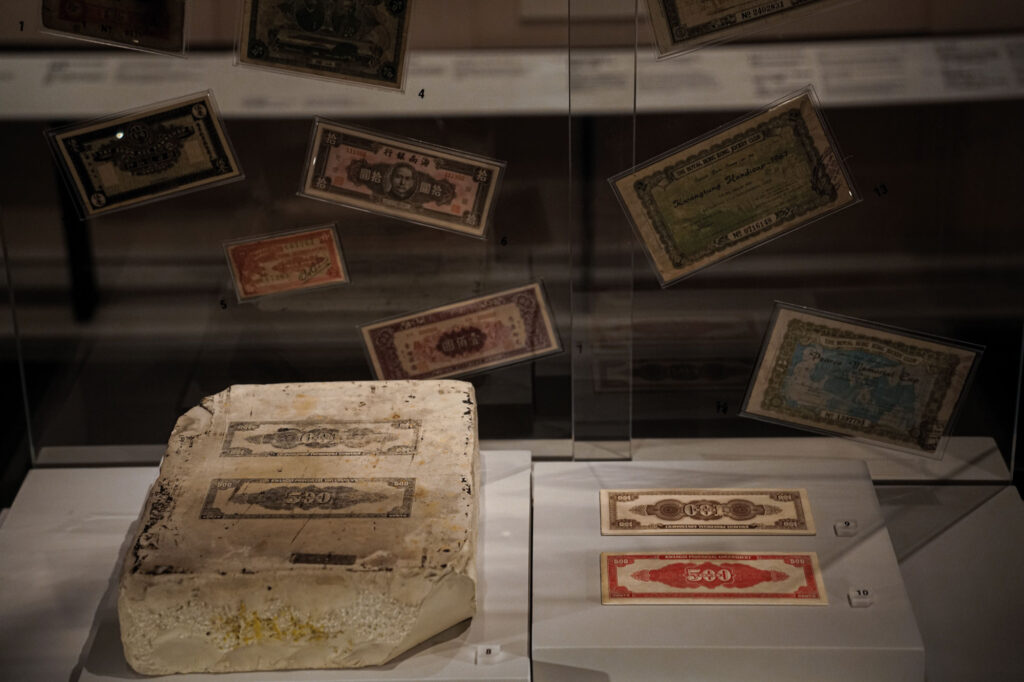
The Luso community was also influential in Hong Kong’s religious and legal practices. The exhibition boasts a large installation shaped like the entry arch of a classic Portuguese church, introducing important Catholics like Father Lionel Xavier, former principal of Rosaryhill School, and Sister Marie Remedios, former principal of St. Francis’ Canossian College. Representing Portuguese contributions in the field of law is a gown worn by the Hong Kong-born barrister Leonardo d’Almada e Castro Jr when he became an Honorary Doctor of Laws in the 1960s. D’Almada e Castro Jr was the first of Hong Kong’s Portuguese community to be appointed King’s Counsel, a title of recognition for excellence in advocacy within the Commonwealth.
Many other prominent figures emerged from Hong Kong’s Portuguese community. Januário António de Carvalho was another prominent figure in the legal realm, serving as a Justice of the Peace (as well as chief cashier of the city’s Treasury). Born in Macao in 1830, his family was among the first wave of Portuguese to arrive in Hong Kong.
Food and sports and socialising

The Portuguese made an imprint on Hong Kong’s everyday life. Estórias Lusas dedicates a whole room to culinary traditions and features recipes familiar to anyone acquainted with Macanese cuisine. These dishes are a culmination of spices, techniques and ingredients harvested from the Portuguese’s travels around the world, with an emphasis on Sino-Luso fusion. Take tacho, a hearty stew that evolved from traditional cozido à portuguesa to incorporate Chinese sausages, daikon and shrimp paste (decidedly East Asian elements).
Upon entering, visitors are welcomed by a hologram of the Dona de Casa (‘Lady of the House’ in English), who conjures a projected feast up onto a large wooden dining table. Voices in Patuá – the Macanese creole – echo from behind her chair, explaining the day’s menu and each dish’s origin.
The exhibition also explores the role of social clubs in preserving Portuguese identity in Hong Kong. Two major ones are Club Lusitano, founded in 1866, and Club de Recreio, a social centre founded in 1906 that now has a strong emphasis on sports. Where Club Lusitano’s membership is open to anyone of “Portuguese nationality or extraction”, Club de Recreio began opening its membership up to people of all nationalities in 1968.
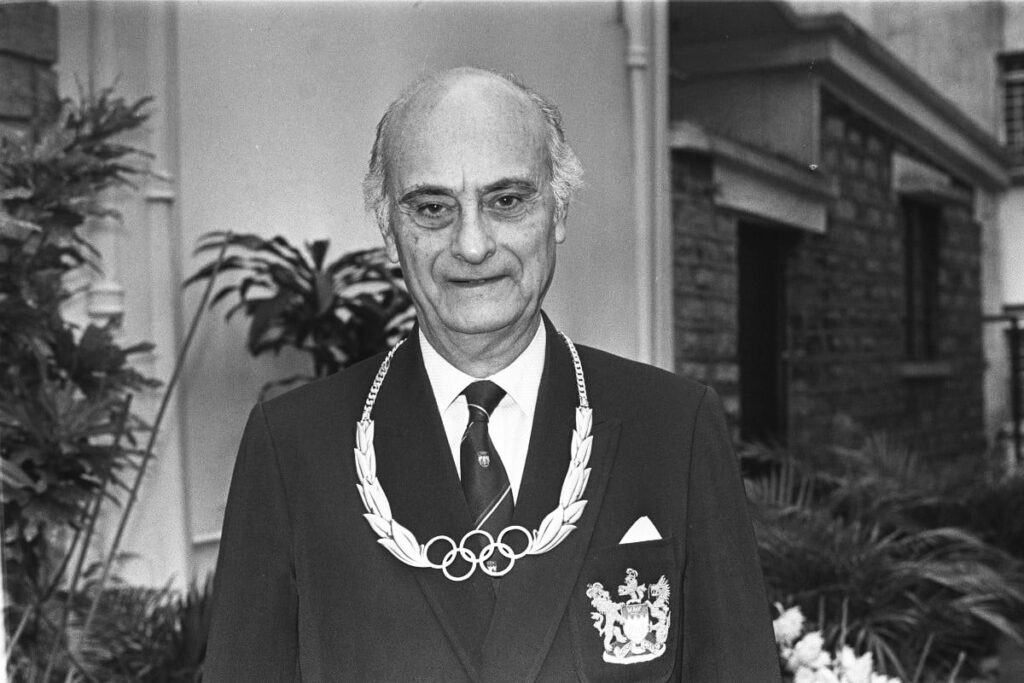
Several Portuguese-Hong Kongers have made their mark in the city’s sporting arena, including Arnaldo de Oliveira Sales, co-founder of the Hong Kong Olympic Committee. Sales was ethnically Portuguese, but born in Guangzhou in 1920. His family moved to Hong Kong when he was 8 years old, and he went on to play influential roles in both sports and municipal affairs. Sales, who was also heavily involved in Club Lusitano, died in Hong Kong at the age of 100.
Another prominent sportsman of Portuguese descent in the city is Hong Kong-born horse racing legend Tony Cruz, whose stellar career as a jockey has been followed by massive success as a trainer. One of Estórias Lusas’ rooms pays tribute to his achievements, featuring statues of the renowned thoroughbred Silent Witness alongside other racing memorabilia. Under Cruz’s guidance, the bay gelding secured 17 consecutive wins and was ranked the world’s top sprinter for three consecutive seasons (2003–2005). Cruz was born in Hong Kong in 1956.
In decline, but not forgotten
One of the most poignant aspects of Estórias Lusas is its exploration of the community’s gradual decline. The tumult of World War II caused upheaval; many Portuguese fled to the safe port of Macao while others stayed in Hong Kong, contributing to the war effort. The D’Almada Barretto family donated a collection of old photos depicting men in uniform during this period, training in the New Territories as part of the Hong Kong Volunteer Defence Corps. Post-war immigration saw many Portuguese families leave Asia in search of new opportunities.
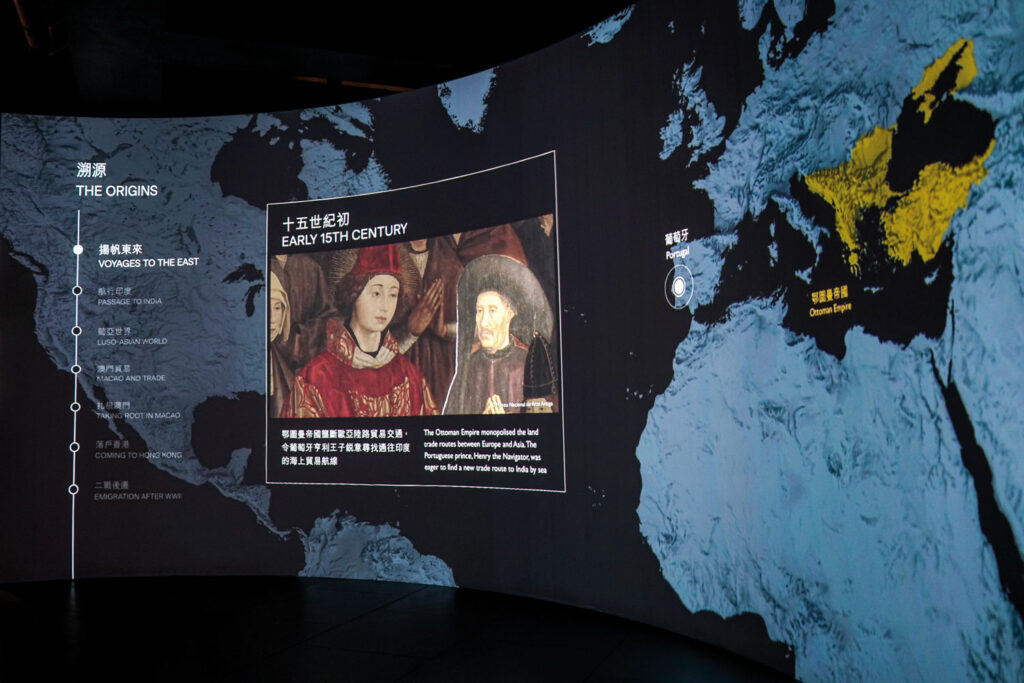
Those remaining continued to contribute in different ways throughout the later 20th century, however. Estórias Lusas pays special tribute to artists with Portuguese ancestry, like the singer Joe Junior (born José Maria Rodrigues Jr in 1947, in Macao), who became a household name in the 1960s with hits like “Voice of Love” and “Deborah”. Visitors will find an array of musical memorabilia on display: from vinyl records to concert posters, instruments to radio transcripts. Another key figure of Portuguese descent in Hong Kong’s music scene was legendary radio DJ Ray Cordeiro, known as ’Uncle Ray’. Cordeiro was born in Hong Kong in 1924, and hosted the city’s longest running radio show – an easy-listening programme called All the Way with Ray – until 2021, when he retired at the age of 96. He died two years later.

While the 1961 census recorded nearly 9,400 Portuguese speakers in Hong Kong, estimates today suggest that today’s population comprises a tiny fraction of that number. The Portuguese community’s contributions remain woven into the city’s history, however – something Estórias Lusas makes clear. In a Hong Kong that continues to evolve, the exhibition reminds us that a city’s identity is not just about those in the spotlight now, but also those who have gone before.
Estórias Lusas is part of a broader effort to recognise Hong Kong’s multicultural heritage. Alongside it, exploring other overlooked communities, the Multifaceted Hong Kong Exhibition Series includes Yau Tsim Mong – The Urban Transition and Community Bonds and Sojourning in Gold Mountain – Hong Kong and the Lives of Overseas Chinese in California.
